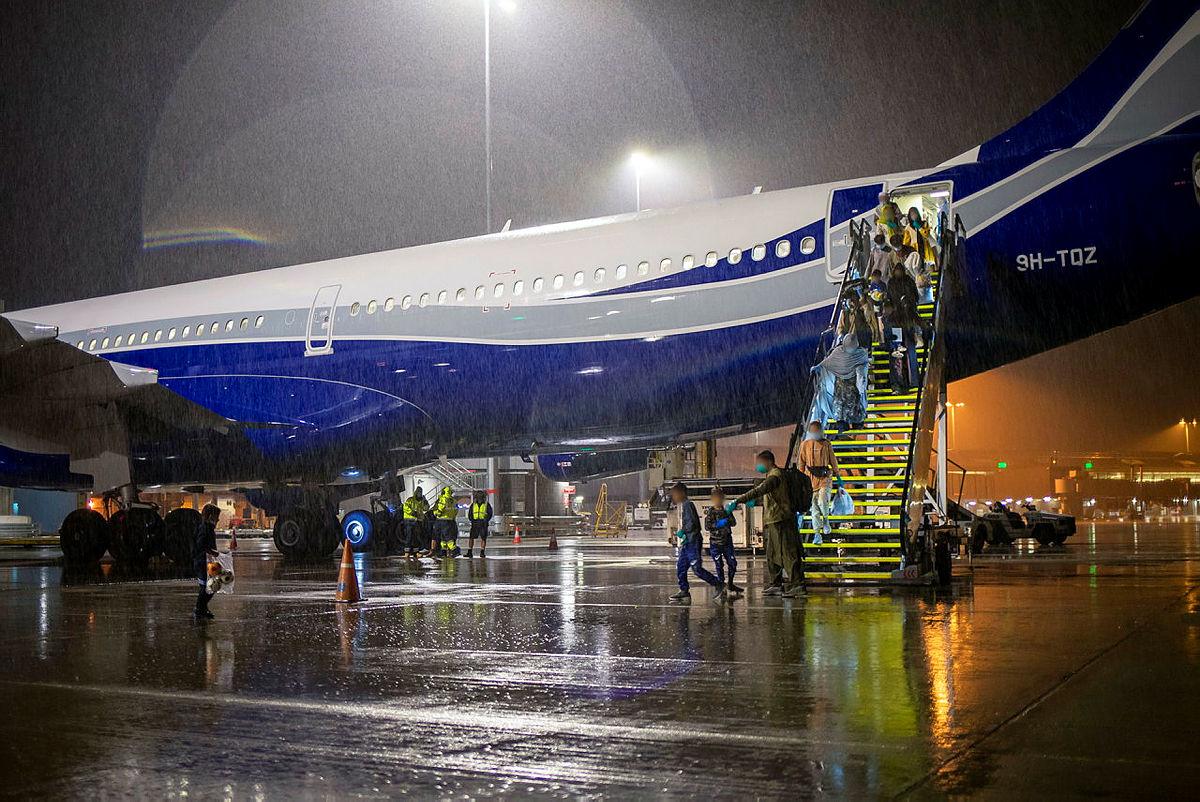
Sea state
All three of Australia’s Hobart-class guided missile destroyers have passed the final phase of testing and evaluation now that HMAS Sydney has returned from a successful 18-week trial deployment to the US and Canada. The trio are the Royal Australian Navy’s most powerful vessels ever and are expected to receive regular technology and capability updates. They are equipped with the same systems used by the US Navy, with the goal of enhancing the interoperability and interchangeability of US and Australian ships in the Indo-Pacific.
The chief of US naval operations, Admiral Michael Gilday, has admitted that the design for the new USS Gerald R. Ford aircraft carrier was overly experimental, which caused scheduling delays and cost overruns. He said that introducing just a few new technologies into the complex platform would have ensured smoother integration. Instead, the carrier has 23 new systems, increasing the risk of multiple system failures and slowing the rate of progress. Despite these issues, completion is projected for next year.
Flight path
As the Taliban advanced into Kabul on Sunday, fleeing Afghans inundated Hamid Karzai International Airport. Some tried to board US military aircraft evacuating American personnel and Afghan citizens who worked for them and who might have been targeted for Taliban reprisal if they had stayed. A US Air Force C-17 left Kabul with 640 people on board, approaching the record for the most people ever flown on the aircraft, which was originally designed to carry only 134 personnel. Tragically, several Afghans died attempting to cling to a departing US jet.
Evacuation efforts have continued in the days since, with thousands of US troops working alongside international forces to secure the airport for more evacuation flights, including around 250 Australian Defence Force personnel. This morning, 60 people left Kabul on an Australian jet and the first group of Australian evacuees landed in Perth, comprising 90 Australian citizens and Afghan visa holders; 76 were evacuated on board a UK Royal Air Force jet yesterday. Overnight, a second Australian C-130 was sent to the Middle East, joining the two C-17s and one KC-30 already supporting Australian efforts to evacuate 600 Australians and local staff from Kabul.
Rapid fire
The Australian Army’s Boxer combat reconnaissance vehicle, manufactured by Rheinmetall under the Defence Department’s LAND 400 Phase 2 program, is reportedly experiencing weight-related technical issues. Unnamed defence sources told the ABC that integrating anti-missile and anti-drone systems into the vehicle’s Lance turret is making it ‘too heavy and unstable’. Defence has rejected these claims and said that it isn’t aware of any weight or stability issues. After a gun-jamming problem reported earlier this year, further technical issues may put the program’s future development at risk.
Russia and China have completed their first China-based joint military drills, Sibu/Interaction 2021. The five-day exercise involved approximately 13,000 troops, with Russian soldiers using Chinese weapons for the first time to practice joint reconnaissance and strike interoperability. China’s defence ministry said the overall purpose was to develop practical cooperation and ‘capability to fight against terrorist forces’. Russia and China share key interests, including combating what they perceive to be restive terrorist groups in neighbouring states, such as Afghanistan.
Final frontier
US entrepreneur Jeff Bezos’s space company Blue Origin has filed a federal lawsuit against NASA, alleging improper evaluation of proposals and preferential treatment of competitor Elon Musk’s SpaceX during contracting for a lunar landing system for the agency’s Artemis program. Observers expected NASA to choose two companies, but, due to funding constraints, only SpaceX won the bid. After an earlier complaint to the Government Accountability Office paused SpaceX’s work on the contract, there are concerns this suit may cause long delays to the Artemis project, risking its 2024 timeline.
New research by the Texas-based Southwest Research Institute examines the origins of the 9.6- kilometre-wide asteroid that triggered the mass extinction of 75% of earth’s animal life 66 million years ago. Based on modelled orbit patterns of 130,000 asteroids, the researchers say the asteroid likely originated further away than previously thought. They suggest that it came from an outer area of our solar system’s main asteroid ring and was pulled out of solar orbit towards earth by thermal ‘escape hatches’. This research follows the discovery of iridium, or ‘asteroid dust’, in Mexico’s Chicxulub crater earlier this year.
Wired watchtower
WhatsApp and Twitter are facing renewed challenges to stop and deter violence on their platforms, after Taliban forces reportedly used the apps to organise their capture of Kabul and communicate to each other once they took control of the city. Despite being notionally banned from WhatsApp, Taliban members are still reportedly using its services, and spokesman Zabihullah Mujahid is providing regular updates through his Twitter account. Social media companies are once again under fire for failing to apply regulations equally and causing complications for governments trying to prohibit the mass dissemination of messages from violent organisations.
US President Joe Biden’s administration is reportedly aware of renewed Russian attempts to interfere in the US mid-term elections set for next year. Moscow is apparently trying to sow doubts in the US handling of the Covid-19 pandemic by spreading disinformation on social media and influencing news outlets. These efforts mirror interference in the 2016 presidential election to undermine confidence in the American electoral system. Biden has warned that Moscow’s interference violates American sovereignty.